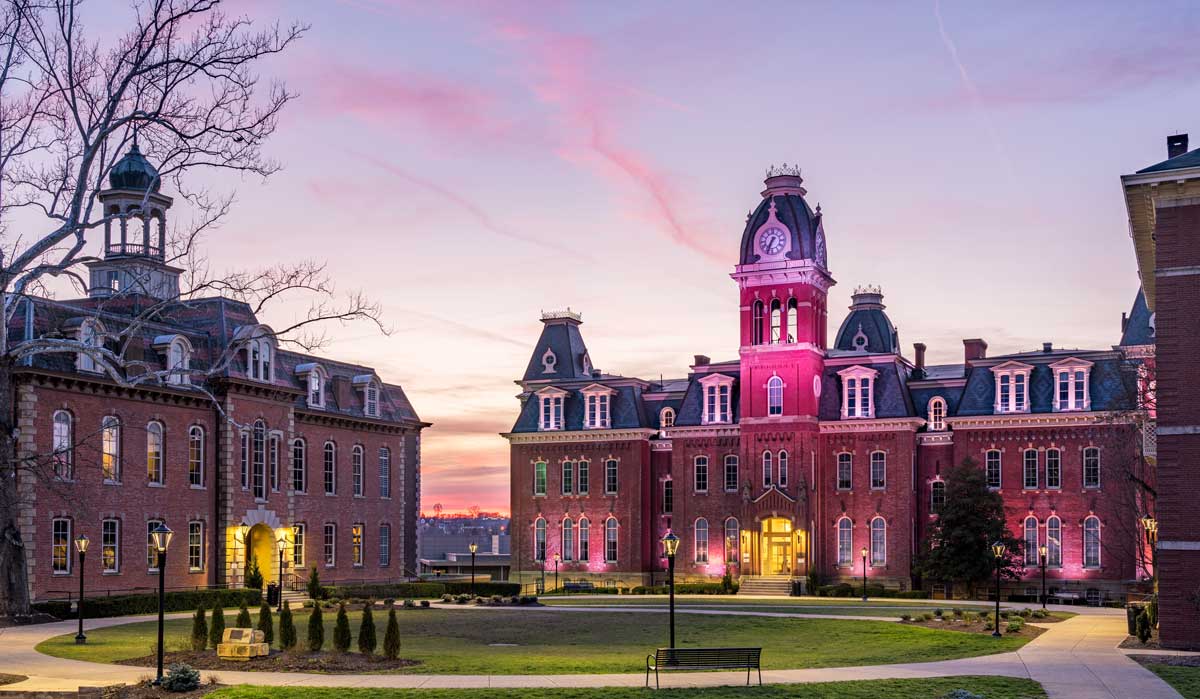Last week, the New York Times published a guest essay from associate professor of German Leif Weatherby at NYU. The title of the essay, What Just Happened at West Virginia University Should Worry All of Us, opened with a statement that the recently announced planned program cuts (169 faculty and 30+ degree programs) to WVU’s curriculum and faculty would deprive West Virginia’s citizens of the best part of a college education.
By cutting the school’s programs of world languages and literatures as well as other degrees across the arts and pre-professional programs, the essayist argues that the university is deciding that certain citizens “don’t get access to a liberal arts education.”
According to Mr. Weatherby, this denial of access isn’t just a local story. It’s not only in West Virginia; politicians, state officials, and management consultants around the U.S. are making liberal arts scarce in some of the poorest states.
Mr. Weatherby writes that the $45 million projected deficit at WVU is a “result of overly aggressive planning more than it is a financial liability created by the humanities.” WVU’s president Gordon Gee failed to recruit enough students and attract enough donations to “fund a broad education for West Virginians.”
There’s a broader theme in the essay about a right-wing plot to eliminate the liberal arts. Mr. Weatherby also calls on Democrats to “fight back in these culture wars, defending the humanities.”
Sadly, Mr. Weatherby’s commentary is not based on the evidence, something that scholars used to seek to uncover. The state of West Virginia ranks near the bottom (47th) in terms of wealth.
The state also ranks 48th in terms of population growth and is 39th in terms of overall population. Having the luxury of tens of millions of residents and enormous state budgets like California and Texas is not an option for WVU.
WVU Enrollment Facts
West Virginia University is the flagship state university. It enrolls 24,741 total students, 19,059 are undergraduates. Its in-state undergraduate tuition in 2022-2023 was $9,360, and its out-of-state undergraduate tuition was $26,568. Room, board, and other costs increased the total cost of attendance to $24,928 in-state and $42,136 for out-of-state students.
Nearly 100 percent (97%) of full-time beginning undergraduates at WVU received financial aid. Almost the same percentage (94%) received grants with 25% receiving federal grants, 39% receiving state and local grants, and 90% receiving institutional grants. WVU’s average net price was $12,202 in 2021-2022. Its average net price declined approximately 10% from 2020-2021.
WVU accepted 88% of its applicants for the Fall of 2022 and 28% of those admitted enrolled. Nearly 60% (57%) of its undergraduate students are classified as out-of-state. Its first-to-second-year retention rate is 79%. Its six-year graduation rate is 62% and 24% of its students transfer out.
WVU Graduates 2021-2022
I reviewed the list of completions by degree program for 2021-2022. There were 4,438 students who completed a bachelor’s degree in 2021-2022. In the chart below, you can see how many students completed degrees in languages and landscape architecture (another program slated for closure).
There are 24 faculty positions in the above department. Eliminating the Department would eliminate $5.8 million in expenses. It would eliminate less than .5% of completers. I could not find the financial details for the cost of the Landscape Architecture program but there was only one completer last year.
Enrollment at WVU has slid nearly every year for the past decade. State appropriations for WVU fell nearly 36 percent from 2013 to 2022. At the same time, its debt has risen more than 50% since 2014 to $962 million in 2022. With declining enrollments, declining state appropriations, and a looming debt burden, cutting expenses is the prudent thing to do.
President Gee’s Response to Program Cuts
WVU’s president E. Gordon Gee is one of the most experienced college presidents in America. This is his second time serving as president at WVU. He has not asked leaders of West Virginia’s legislature to bail out the university.
In a Washington Post article written by Nick Anderson, he said “If I had gone down and asked for $45 million from the state legislature, they would have thrown me out.” Gee said his strategy is to make the tough decisions now and ask legislators for support at some future date.
The number of financial deficits for colleges and universities is projected to increase as we approach the projected decline in 18-year-olds that will begin in 2026. WVU’s approach appears to be reasoned and not politically motivated.
Final Thoughts on WVU Program Cuts
I haven’t read an article from anyone criticizing the nearly 60% of undergraduates at WVU recruited from out-of-state. Recruiting out-of-state students has reduced the projected deficit. Given that WVU admits 88% of its applicants, it appears in-state demand is being met and the higher out-of-state tuition is covering many operating expenses at WVU.
Mr. Weatherby’s defense of the liberal arts ignores the fact that students are not choosing them as majors. Popular undergraduate majors at WVU are in agriculture, biology, business, communication, criminology, engineering, kinesiology, nursing, and psychology.
If students don’t believe they have the time or money to attend graduate school, they’re likely to select degrees that they believe will help them the most as they seek employment post-graduation.
The logical solution to avoid the elimination of degrees is to increase the number of students enrolled in them. That requires making them relevant. By the way, Mr. Weatherby should take a look at the College Navigator stats for languages at his institution, NYU.
NYU had 18 undergraduate completers in languages last year, none of them in the German program. Mr. Weatherby and his colleagues should be thankful for the 62 master’s students and 24 doctoral students whose tuition covers some of those language department expenses.
Ignoring the facts and pointing fingers at the politicians may excite a few people but generally not those who examine the evidence.
Students and their families are focusing on the cost of college and the relevance of its outcomes compared to other alternatives. Academics need to be part of the solution and not keep their heads in the sand until it’s too late to save their programs.












